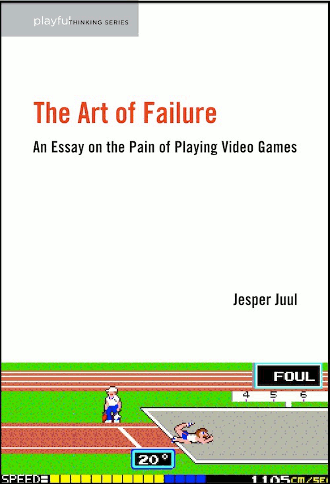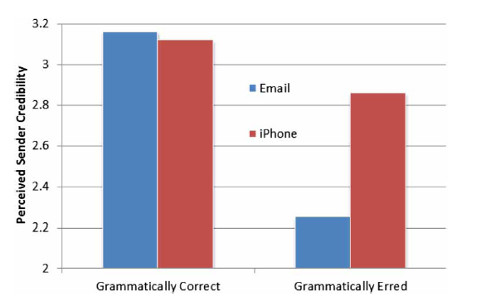
Every once in a while I realize probably one third of what my kids say to me is just them doing complex a/b testing of my responses.
— Clive Thompson (@pomeranian99) June 28, 2013

There’s a fascinating relationship emerging between graffiti and social media. Graffiti artists have always wrestled with their peculiar ephemerality of their form — as soon as a work goes up, you’re waiting for the authorities to take it down. It’s art made for a gallery that is often antagonistic to the artist. As a result, the explosion of cameraphones and picture-sharing online is producing a robust secondary audience: You can erase it the day it goes up, but the art lives on in the aether.
In Egypt, street art has flourished ever since Mubarak was toppled in 2011. Last month’s issue of Smithsonian included a short essay about the renaissance, and what caught my eye was how the Egyptian graffiti artists work to carefully document and promote their work online, intentionally blurring the line between which audience — online? offline? — the graffiti is for:
The graffiti has become a self-perpetuating movement. The images provoke the government, which responds with acts of cruelty that only increase the resolve of the artists. Much of the street art is covered over or defaced after it is created. That’s what prompted Soraya Morayef, a Cairo-based journalist, to photograph and document the images on her blog, “Suzee in the City.” She is an art critic as astute as those who survey the genteel galleries in New York and Paris.
“There are so many artists and styles,” Morayef says. “You can tell when someone has been influenced by Banksy or hip-hop fonts, but there are also a lot of individual styles using Arabic calligraphy and that have been inspired by Egyptian pop culture. There is Alaa Awad, who paints pharaonic temples and murals but with a modern twist to them. Then you have El Zeft and Nazeer, who plan their graffiti like social campaigns, where they pick a strategic location and write about it on social media and make short videos.”
Drop what you’re doing right now and go look at Morayef’s blog, by the way. She’s captured a spectacular range of street art in Egypt, and a lot of it is spellbinding in its beauty, political power, and, in the case of that fantastic chess-board piece I put up above, both. Obviously, the Egyptian postrevolutionary political situation is unbelievably messy right now, but that image — a fleet of pawns confronting the king — still fills the heart. The sheer range of styles in the Egyptian street-art scene is fascinating: It careens from Banksy-style stencil work to newspaper/op-ed cartoons to ancient Egyptian forms to traditional Bronx bubble lettering and back again.
Of course, the feedback loop between graffiti and street art isn’t necessarily so positive in all situations. Two weeks ago the New York Times wrote a piece about how graffiti tags are appearing in US national parks — including in remote, out-of-the way places like on cactuses out in the desert, which not only defaces the natural environment but can injure the plants, some of which are 150 years old. Why are people putting graffiti in such odd places? So they can post pictures on social media for bragging rights, the park officials argue. (They don’t offer any proof this is actually happening, but it seems like a reasonable explanation.)
In the case of Egypt, though, the feedback loop is powerful and useful. There’s no simple offramp to the political morass in the country, but art is a crucial way a culture thinks out through the problem, out loud.
(Oh, and: Desert cactuses can live to be 150 years old? Rad.)

Why do we play video games, when they cause us such pain?
This is the question that Jesper Juul wrestles with in his terrific new book, The Art of Failure: An Essay on the Pain of Playing Video Games. It’s an absolutely fun romp through the philosophical oddness of games, and what they do — and don’t — have in common with other forms of painful art. Juul opens the book by talking about his experience of playing two games that had radically different levels of difficulty. The first one, Patapon, was pretty challenging, so Juul kept on failing, putting the game away in frustration, but then returning to it again and again. In contrast, the second game — Meteos 2 — was so chill he finished the whole thing in one sitting.
Which game made him really angry? It wasn’t the hard one; it as the easy one. This is, of course, a common reaction amongst gamers: Hating something for not being difficult enough. And this leads Juul into a lovely statement of the weirdness at hand:
I dislike failing in games, but I dislike not failing even more. There are numerous ways to explain this contradiction, and I will discuss many of them in this book. But let us first consider the strangeness of the situation: every day, hundreds of millions of people around the world play video games, and most of them will experience failure while playing. It is safe to say that humans have a fundamental desire to succeed and feel competent, but game players have chosen to engage in an activity in which they are almost certain to fail and feel incompetent, at least some of the time. In fact, we know that players prefer games in which they fail. This is the paradox of failure in games. It can be stated like this:
1. We generally avoid failure.
2. We experience failure when playing games.
3. We seek out games, although we will experience something that we normally avoid.
This paradox of failure is parallel to the paradox of why we consume tragic theater, novels, or cinema even though they make us feel sadness, fear, or even disgust. If these at first do not sound like actual paradoxes, it is simply because we are so used to their existence that we sometimes forget that they are paradoxes of all. The shared conundrum is that we generally try to avoid the unpleasant emotions that we get from hearing about a sad event, or from failing at a task. Yet we actively seek out these emotions and stories, art, and games.
The paradox of tragedy is commonly explained with reference to Aristotle’s term catharsis, arguing that we in our general lives experience unpleasant emotions, but that by experiencing pity and fear in a fictional tragedy, these emotions are eventually purged from us. However, this does not ring true for games—when we experience as a leading defeat we really are filled with emotions of humiliation and inadequacy. Games do not purge these emotions from us — they produce the emotions in the first place.
Juul tackles a lot of explanations for the paradox. The easy one, he points out, is simply to say that we enjoy failure inside games because “they’re just games”, without any serious stakes in life. That’s true to a point, but as he notes, it belies the incredibly deep emotions that we feel over video games: The epic cursing, the Xbox controllers hurled across the room. Juul tours through oodles of philosophy and art theory as he offers ways to explain the game paradox, but the one that rang most true to my personal experience is that games are a sort of existential measuring device we use to figure out how resilient we are. To perform this sort of calibration you something that a) feels deeply meaningful but b) isn’t going to ruin your actual life when you inevitably, and serially, screw up — hence games. As Juul puts it:
This is what games do: they promise us that we can repair of personal inadequacy — and inadequacy that they produce in us in the first place … Video games are for me a space of reflection, a constant measuring of my abilities, a mirror in which I can see my everyday behavior reflected, amplified, distorted, and revealed, a place where I deal with failure and learn how to rise to a challenge.
(This pretty much squares with how I feel about Robotron 2084; it’s less a game than a set of calipers for my soul.)
Another note I dug: At one point, Juul likens the failure paradox to film theorist Noel Carroll’s idea about why we submit ourselves to horror movies — “… when watching a horror movie, we genuinely dislike being horrified, but this unpleasantness is outweighed by the cognitive joy of learning more about the enigmatic monster at the center of the story. The experience of horror is simply a price we are willing to pay in order to reach the enjoyment of learning about the monster.”
The paradox of failure in games also helps explain why “gamification” so rarely works when corporations try to use it to motivate employees. If we grant the force of Juul’s argument — that failure is central to why we play games — then it’s clear that you can’t easily make a game out of something where failure is just straightforwardly bad, like your job. The sheer philosophical strangeness of what makes games games ought to have been a warning sign; you can’t make a dreary white-collar job delightful by simply bolting a game mechanic onto its wireframe, when game mechanics themselves are based on emotional clockworks so convoluted they wouldn’t be out of place in Camus’ “The Myth of Sisyphus”.
What games do you like to fail at?

Do you have one of these sig-file apologies at the end of your phone mail?
You probably should. A recent study suggests that it’ll improve your image — because when recipients see that you wrote the email on your phone, they’re more likely to forgive your crappy grammar and spelling. And therein lies some fascinating psychology of our machine age!
In the experiment, Caleb T. Carr and Chad Stefaniak took 111 undergraduates and had them assess an email that was purportedly written by the “HR director of a large accounting firm”. The students were split randomly into four groups, and each group was shown a slightly different version of the message. One group saw a version of the message with correct spelling, punctuation and grammar, and it looked like it came from someone who’d written it on a computer: i.e. the signature line just listed the HR person’s name and organization. The second group saw the same message, but with several sloppy errors introduced. (It’s below.) The third group and fourth groups saw the same respective messages — one correct, one incorrect — except this time the signature included the line ‘‘Sent from my iPhone’’.

After reading the message, the students in each group were asked to rate how credible they found the sender, on a scale of 1 to 5, from low to high.
The results? When the message had correct spelling, grammar and punctuation, the sender was rated as being very credible — and there was little difference between whether the email seemed to have been composed on a computer or a phone. But when the message had errors in it, things changed: Students attributed higher credibility to the person who’d written the lousy message on a phone. They were more forgiving of errors, as this chart of the results shows:

Now, note that Y axis on that chart has been truncated to emphasize the spread, so it’s not as dramatic as it seems. But it’s still a pretty significant effect.
In one sense, this finding confirms what I’d already expected: We’re aware that our machines introduce quirks in how others communicate with us, and we account for them. This is an old behavior, of course. We engage in linguistic code-switching all the time, accepting as natural that our friends will use language more casual or even coarse when we’re hanging out alone as compared to when we’re with their parents or employers. But it’s intriguing to see evidence that we’re now intuiting the code-shift brokered by this particular machine environment: A tiny glass screen with an intangible keyboard, upon which it’s super easy to make mistakes. (I wonder what we’d have found if we’d done this research back in the 19th century, when manual typewriters were the hot new tech?)
As the authors note, one could sneakily hack this effect to appear more credible … even while at the computer:
Unfortunately, less scrupulous professionals could go so far as to alter their desktop’s e-mail client to automatically include a signature block imitating a mobile device to take strategic advantage of the error forgiveness that accompanies mobile e-mail.
Heh.
I’m also wondering how autocorrect plays into this. I’d be interested to see this study repeated not with errors of punctuation, spelling and grammar, but errors of substitution — i.e. sentences where a wrong word has been inserted into an otherwise correct sentence. When it comes to our compositional style on mobile phones, the main algorithmic error du jour is autocorrect: The machine mistakenly predicting which word we’re intending to type. I bet that autocorrect errors are now so common, and their source so well understood, that we’re similarly forgiving of mobile messages that contain weird, misplaced words.
Indeed, the existence of pop-culture sites like Damn You Autocorrect! indicate that we’re developing a pretty good literacy, and sense of humor, about this particular form of inadvertent cyborg utterance. Given the fact that the majority of stuff on Damn You Autocorrect revolves around Iphones accidentally creating sexually inappropriate substitutions of absolutely epic dimensions, you could say that autocorrect is the Freudian slip of the digital psyche. Of course, a lot of the particularly racy errors submitted to Damn You Autocorrect are probably faked, but frankly that might make them even more awesome: We’re sufficiently aware of autocorrect problems that we’ve created a literary form out of them.
(The full paper — “Sent from My iPhone: The Medium and Message as Cues of Sender Professionalism in Mobile Telephony” — is here, but alas is paywalled. It was so awesome I wanted to write about it anyway.)
This month I wrote my Wired column about how we need to go past the “maker” movement — and begin a “fixer” movement. The idea had been rattling around in my head for a while, because I was getting increasingly appalled by the amount of toxic electronic stuff that was breaking around me; I’d also been reading The Waste Makers, the fabulous 1960 book by crusading journalist Vance Packard). And I’d been learning about the extremely cool fixer collectives that were cropping up around the world. Environmentalism, handiness, problem-solving: This is catnip for me! I wanted to write about it.
When I reread my piece now, though, I realize I’m slightly uncomfortable with one aspect of it — which is that it looks as though I was taking a dismissive swing at the maker movement. Hey guys! Stop doing this self-indulgent “making” — start being serious, sober-minded “fixers!” Making has moved sufficiently far into the mainstream that it has provoked its own entirely-predictable backlash; for any critic looking for easy targets, there’s an endlessly mockable supply of people selling twee things on Etsy, or hawking funding for dubious Kickstarter projects. (A great recent satire: The “Kickstopper” video.)
Except this critique is misguided. That’s because of a simple fact of maker/fixer psychology: Making often leads to fixing. When you get seduced into trying to make something, you wind up accumulating the mindset and skills that are crucial to fixing stuff in our throwaway, made-to-break world.
This precisely what happened to me. A couple of years ago I saw the Chronulator analog clock on Boing Boing, fell in love with it, and ordered a kit. I hadn’t done much soldering in aeons, so it was a steep learning curve. But that got me interested in making other weird electronic projects, so I started messing around with Arduino kits — and as with most making, I wound up with a host of partially-built, abandoned, sad little pieceworks of failure. But an interesting side effect emerged: Because I’d become much more comfortable with electronics I started ripping open things when they’d break to see if I could fix them. This led me to discover, as I wrote in my Wired column, that many Dell and HP laptops are super easy to fix … so now I think nothing of opening up a neighbor’s laptop to try and repair it.
The same thing happened with woodworking. I saw the cigar-box guitar that Mark Frauenfelder made, wanted to make one, and was thus forced to learn a bunch of woodcrafting techniques. (That’s the guitar I made, above!) And again, pretty soon the woodworking also started spilling over into fixing: I started taking my old house’s misaligned doors off their hinges and resetting them, resurfacing old wood, ripping walls open to reach something busted within, knowing I could make it look new(ish) again after. Making was the seductive part, the fun part, and it opened my eyes to the fixability of the world around me. Or to put it another way, without doing the supposedly “silly” projects I’d never have done the “serious” ones. It’s a pattern that Mark has noted himself, including in his book Made by Hand and in this Q&A:
There are practical benefits to making things, but it seems that you’ve discovered other benefits, perhaps psychological or spiritual. Can you talk a little bit about how your own life has changed as a result of becoming a do-it-yourselfer?
I feel that my sense of being able to get things done, my self-efficacy, has increased. I’m less reluctant to take on projects that involve new skills or knowledge that I don’t have, because having gone through a bunch of things where I didn’t know what I was getting myself into, and being able to eventually be successful in completing those projects and solving those problems, I know that probably with enough time and effort I can tackle those things that I normally would have shied away from, like fixing the thermostat that went on the blink a couple of weeks ago, instead of calling an HVAC expert to install a new one. I went online, read about it, and bought a thermostat. It took me a couple of hours to do it, but I got it done.
That said, there are some interesting differences in the psychologies of making vs. fixing. I’ve found it’s easier to be daring with fixer projects, because the emotional cost of failure is lower. If I’ve got a busted laptop, why not crack it open? What’s the worst I can do? Break it? It’s already broken! There’s also a sort of puzzle-solving pleasure in fixing, a sense of grappling with complexity. You encounter a lot of mystery that you’ll never solve and just have to live with, which is what makes repair a philosophically powerful activity. You learn humbleness in the face of intransigent reality. This was something Matthew Crawford wrote about in Shopcraft as Soulcraft:
Fixing things, whether cars or human bodies, is very different from building things from scratch. The mechanic and the doctor deal with failure every day, even if they are expert, whereas the builder does not. This is because the things they fix are not of their own making, and are therefore never known in a comprehensive or absolute way. This experience a failure tempers the conceit of mastery; the doctor and the mechanic have daily intercourse with the world as something independent, and a vivid awareness of the difference between self and non-self.
Crawford is overly critical of making, I think; there are plenty of mysteries and puzzles when you’re building something from scratch, too. But the point here is good.
I'm Clive Thompson, the author of Smarter Than You Think: How Technology is Changing Our Minds for the Better (Penguin Press). You can order the book now at Amazon, Barnes and Noble, Powells, Indiebound, or through your local bookstore! I'm also a contributing writer for the New York Times Magazine and a columnist for Wired magazine. Email is here or ping me via the antiquated form of AOL IM (pomeranian99).

ECHO
Erik Weissengruber
Vespaboy
Terri Senft
Tom Igoe
El Rey Del Art
Morgan Noel
Maura Johnston
Cori Eckert
Heather Gold
Andrew Hearst
Chris Allbritton
Bret Dawson
Michele Tepper
Sharyn November
Gail Jaitin
Barnaby Marshall
Frankly, I'd Rather Not
The Shifted Librarian
Ryan Bigge
Nick Denton
Howard Sherman's Nuggets
Serial Deviant
Ellen McDermott
Jeff Liu
Marc Kelsey
Chris Shieh
Iron Monkey
Diversions
Rob Toole
Donut Rock City
Ross Judson
Idle Words
J-Walk Blog
The Antic Muse
Tribblescape
Little Things
Jeff Heer
Abstract Dynamics
Snark Market
Plastic Bag
Sensory Impact
Incoming Signals
MemeFirst
MemoryCard
Majikthise
Ludonauts
Boing Boing
Slashdot
Atrios
Smart Mobs
Plastic
Ludology.org
The Feature
Gizmodo
game girl
Mindjack
Techdirt Wireless News
Corante Gaming blog
Corante Social Software blog
ECHO
SciTech Daily
Arts and Letters Daily
Textually.org
BlogPulse
Robots.net
Alan Reiter's Wireless Data Weblog
Brad DeLong
Viral Marketing Blog
Gameblogs
Slashdot Games